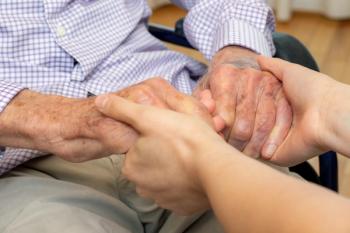
Hospital to home: Patients need a better transition
A study of more than 1,200 patients identifies significant gaps, but researchers also offer practical ways health systems can do better for patients.
Patients are enduring some unnecessary challenges after they are discharged from the hospital, and many of them are preventable, according to a recent study.
University of Michigan researchers conducted a study based on survey results of more than 1,200 patients after they left the hospital. The study was published in
“Health systems aim to improve the quality and value of care by improving patient experiences and clinical outcomes while minimizing costs,” the authors wrote. “One potential route to improving value is improving the transition of care process, which begins before the patient’s discharge and continues beyond their return home.”
When hospitals don’t manage the transition effectively, patients are more likely to suffer a setback requiring another admission to the hospital. Within 30 days of a hospital discharge, patients have a 1 in 5 chance of an adverse event, such as an emergency department visit or readmission, the authors note.
Hospitals face financial penalties from the Centers for Medicare and Medicaid Services if they have readmissions, so they have plenty of motivation to improve the process.
While there are significant challenges, the authors note the study points to “actionable information” to improve outcomes.
“This information on patient challenges during the transition of care process could help hospitals and physicians tailor future care transition interventions to be specific to their patients’ needs,” the authors wrote.
Here are some of the key findings from the study of hospitals and the transition to home.
- Related story:
Five trends worth watching in the post-acute care industry
Racial disparities
Disparities involving Black patients became a recurring theme of the study. While two-thirds (67%) of patients who were white or of another race had seen a doctor after being discharged from the hospital, just over half of Black patients (52%) had visited a physician. Black patients were twice as likely as patients of other races to not have an appointment scheduled (13% to 7%) after a discharge.
Black patients were more likely than white patients and patients of other races to say they didn’t get prescribed equipment, such as oxygen or blood pressure monitors (4.2% vs. 1.3%).
The authors noted the “substantial racial disparity” in completed appointments but said the study wasn’t designed to shed light on why Black patients were less likely to have seen a doctor.
“More health systems need to focus quality improvement work on addressing racial disparities to improve patient care, reduce social and structural inequities in health delivery, and focus on population health,” the authors wrote.
Pick up the phone
More than 1 in 5 patients (21.4%) said they didn’t receive any follow-up calls, which researchers called a “sizable proportion.” The authors said that reflects “inconsistencies in care transition processes.”
The researchers noted that clinicians said they are worried about patients being bombarded with calls, but the authors suggest those concerns are unfounded. Nearly 9 in 10 (89.%) of those who were phoned said the calls were helpful.
“Pharmacy called me to go over my medications again after I returned home,” one respondent said. “That was helpful.”
Offer a number
Roughly 1 in 9 (11%) of the patients surveyed said they were never given a phone number to call if they had any questions or concerns after they were discharged.
A higher percentage of Black patients said they weren't given a phone number than white participants and those of other races (17.5% to 11.4%).
Address social determinants
Roughly 1 in 5 patients (20.8%) reported at least one issue with social determinants of health, and they have an impact on recovery. “Although the health care industry is aware of the important role SDOH plays in patient health, awareness has not translated into improvement,” the authors wrote.
The top four concerns were:
- Affording prescriptions, medical equipment, physical therapy or other elements of care;
- Access to transportation for doctor’s appointments, as well as the grocery store or pharmacy;
- Paying for medical visits and co-pays;
- Having enough help at home.
Factors affecting follow-ups
Transportation issues decreased the odds of completing a follow-up appointment with a doctor by 70%. At the same time, patients who were living with somebody were 50% more likely to have visited a physician after they were discharged.
The authors suggested adding more options for visits via telehealth, which could enable more patients to see a physician after they leave the hospital.
About the study
The study included 1,257 participants: 74% were white, while 22% were Black, and 4% were listed as having another race.
The ages of participants ranged from 21 to 99, with a mean age of 70. There was no age data for about a quarter of the participants.








































